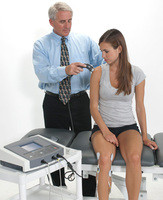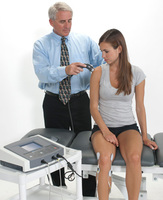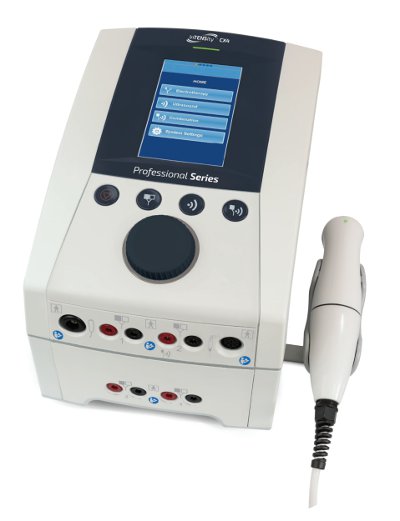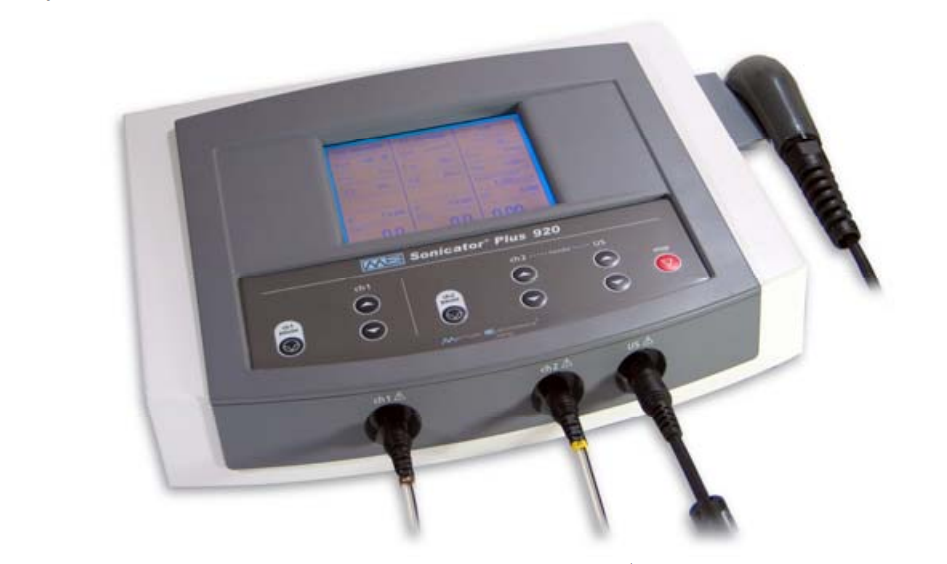 14th Oct 2015
14th Oct 2015
Using Combination Therapy Units in Physical Therapy Treatment
When treating a patient in physical therapy, time is precious. When working in a busy physical therapy clinic, space is precious. Sometimes or rather most of the time, it can feel like there is too little of both. One of the easiest ways to help combat these dilemmas is by utilizing combination units for ultrasound and electrotherapy. Combination therapy units really help solve the time/space problem, which I know sounds a little like science fiction, but it happens to be true. Ultrasound and Electrotherapy units save both time and space by providing these versatile modalities in one machine.
How Ultrasound and TENS units work
Ultrasound emits sound waves from a hand-held wand which can penetrate 1 and 2 inches deep into the soft tissues of the body. These sound waves increase heat, improve circulation in the area, while also relaxing muscles, and healing tissue damage. Electrotherapy works by applying two pads on the area of discomfort or injury. The unit then emits an electric signal which then activates the natural opioid pain-relieving system in the body.
Use of Ultrasound and TENS units in Physical Therapy
Ultrasound and electrical stimulation are two of the most popular physical therapy modalities used today because of their broad range of applications across multiple patient populations.
- Fibromyalgia: In the case of Fibromyalgia, research has been conducted into the use of combo units and has shown ultrasound and TENS are successful in reducing muscle aches and disturbed sleep associated with Fibromyalgia.
- Sciatica: Use of these modalities is recommended before stretching the piriformis muscle, because they will help the muscle relax. Additionally, both Ultrasound and TENS are useful in relieving acute episodes of pain, by the deep heat emitted to the tissues and the local release of neurotransmitters such as serotonin to block the pain signals in the brain.
- Diabetes: Two common side-effects for those suffering from Diabetes are skin ulcers and peripheral neuropathy which can cause severe pain. Ultrasound has been found to reduce the healing time for skin ulcers and TENS treatments have shown to be effective in drastically reducing the pain caused by diabetic neuropathy.
- Greater Trochanteric Bursitis: The combo unit is a valuable tool for treating the pain associated with Greater Trochanteric Bursitis. The deep heat from ultrasound along with the TENS unit working to override the pain signals of the brain reduce pain allowing a patient to be able to participate in treatments that will look to increase the strength and flexibility of the muscles and joints.
- TMD: Temporomandibular joint disorder or dysfunction (TMD) causes a host of problems for patients, in particular pain. The combination of Ultrasound and TENS increases blood circulation, while also helping to decrease pain and swelling in the jaw.
As you can see, there is a wide-range of applications for combination units. This versatility in the treatment of pain offers the efficiency needed when planning patient’s treatment. Used in combination or separately, the housing of both modalities in one unit offers the efficiency of space needed in a busy physical therapy clinic.
Most popular combination therapy machines on ProHealthcareProducts.com:
| InTENsity CX4 | Sonicator 920 Plus | Intellect Legend XT |









